15 years one-stop China custom CNC machining parts factory
 140 |
Published by VMT at Jul 22 2025 | Reading Time:About 7 minutes
140 |
Published by VMT at Jul 22 2025 | Reading Time:About 7 minutes
When selecting stainless steel for cutting tools, medical instruments, or industrial components, making the wrong choice can lead to premature wear, corrosion, or costly replacements. Many engineers, manufacturers, and product designers find themselves comparing 4116 stainless steel and 440C stainless steel—but which one is actually more suitable for your CNC machining project? Without clear insight, it's easy to misjudge their capabilities and end up with parts that underperform. The good news? A detailed comparison can eliminate this uncertainty and help you make an informed decision that aligns with your project's performance, budget, and durability goals.
4116 stainless steel offers better corrosion resistance and easier machinability, making it ideal for medical and kitchen applications. In contrast, 440C stainless steel provides higher hardness and edge retention, suitable for wear-resistant and high-performance cutting tools.
Choosing between 4116 and 440C stainless steel depends on your application’s priorities—whether that’s corrosion resistance, edge retention, or cost-effectiveness. Let’s explore their core differences in detail to determine which alloy best fits your CNC machining requirements.
Key Points: Summary of the Core Differences
Understanding the fundamental differences between 4116 stainless steel and 440C stainless steel is crucial for anyone choosing materials for CNC machining parts, especially in industries where durability, corrosion resistance, and edge retention are vital. Below is a breakdown of their key distinctions:
In short, if corrosion resistance, ease of machining, and affordability are key, 4116 stainless steel is the better option. For applications needing maximum hardness and edge retention, 440C stainless steel takes the lead.
4116 stainless steel is a high-carbon, martensitic stainless steel developed by ThyssenKrupp in Germany, specifically formulated for cutting tools, surgical instruments, and kitchen knives. It is sometimes referred to as X50CrMoV15 according to the DIN EN 10088-1 standard. This steel is renowned for its well-balanced composition that delivers corrosion resistance, toughness, and moderate hardness—making it suitable for precision CNC machining parts that require both form and function.
One of the defining features of 4116 stainless steel is its inclusion of molybdenum (Mo) and vanadium (V), which enhance both corrosion resistance and edge stability. Its chromium content (approximately 15%) enables the formation of a strong passive layer on the steel’s surface, protecting it from oxidation and chemical degradation. This is especially important in industries like food processing and medical device manufacturing, where hygiene and durability are essential.
From a machinability standpoint, 4116 stainless steel is relatively easy to cut and finish using CNC machining services. Its moderate carbon content ensures that while it can achieve a good level of hardness (typically around 56 HRC after heat treatment), it doesn’t become too brittle. This balance makes it a preferred material in CNC machining factories looking to reduce tool wear while maintaining part quality.
Typical applications of 4116 stainless steel include kitchen knives, scissors, surgical blades, and other precision instruments. It’s widely used in European-made blades and recognized for retaining a sharp edge while being easy to re-sharpen. Its corrosion resistance also makes it ideal for environments exposed to water, cleaning chemicals, or food acids.
In summary, 4116 stainless steel combines corrosion resistance, toughness, and cost-efficiency—making it a versatile material in stainless steel CNC machining projects that require reliability and ease of fabrication.
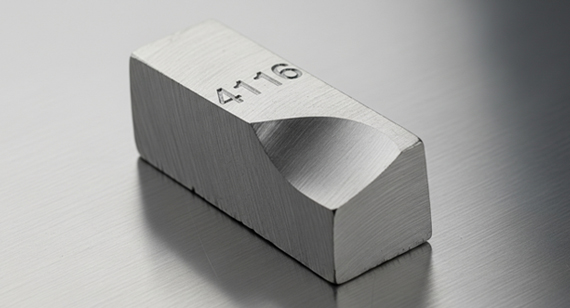
440C stainless steel is a high-carbon, high-chromium martensitic stainless steel known for its exceptional hardness, wear resistance, and edge retention. It belongs to the 400-series stainless steels and is widely regarded as one of the hardest stainless steel grades available for knife blades, precision components, and industrial applications that require long-lasting sharpness and mechanical strength. Its chemical designation is UNS S44004.
What sets 440C stainless steel apart is its ability to reach Rockwell hardness levels as high as 60 HRC after proper heat treatment. This is due to its relatively high carbon content—up to 1.2%—which allows the formation of a very hard martensitic structure. It also contains approximately 17% chromium, which contributes to its corrosion resistance, although not to the same degree as softer grades like 4116 stainless steel. While 440C resists rust and oxidation better than plain carbon steels, it is more susceptible to corrosion than austenitic grades or molybdenum-enhanced steels.
In CNC machining services, 440C stainless steel is more challenging to machine than 4116 due to its hardness, especially after heat treatment. This often results in higher tool wear and slower machining speeds. CNC machining factories typically use specialized cutting tools and cooling strategies when working with 440C to maintain dimensional accuracy and surface quality.
Applications of 440C stainless steel include tactical knives, ball bearings, valve components, measuring instruments, and any part requiring high wear resistance under moderate corrosion conditions. It’s a popular choice in aerospace, military, and industrial fields where performance outweighs ease of processing.
In short, 440C stainless steel is ideal for stainless steel CNC machining projects where edge retention, surface hardness, and durability are top priorities—even if that means sacrificing a bit of machinability or corrosion resistance.
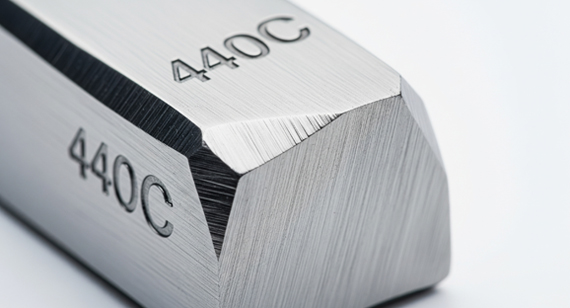
The primary difference between 4116 stainless steel and 440C stainless steel lies in their performance characteristics—particularly hardness, corrosion resistance, and machinability—which stem from their distinct chemical compositions.
Hardness and Edge Retention
440C stainless steel is significantly harder than 4116, reaching up to 60 HRC when heat treated. This high hardness allows it to retain a sharp edge longer under continuous use, making it ideal for tactical knives, bearing components, and high-wear environments. In contrast, 4116 stainless steel usually tops out around 56 HRC, offering less edge retention but more resistance to impact and chipping. This makes it a more forgiving steel for users and machinists alike.
Corrosion Resistance
Although both are stainless steels, 4116 performs better in wet, acidic, or corrosive environments. Its higher molybdenum content provides enhanced resistance against pitting and crevice corrosion. This is why it’s often used in kitchenware, medical tools, and food-grade applications where frequent cleaning or exposure to moisture is common. 440C, despite having more chromium, is more susceptible to rust if not properly maintained, especially after hardening.
Machinability and Workability
From a CNC machining perspective, 4116 stainless steel is easier to cut, drill, and finish. It offers good dimensional stability and reduced tool wear, making it more cost-effective for CNC machining factories. 440C stainless steel, by comparison, is harder to machine, particularly after heat treatment, requiring advanced cutting tools and longer cycle times in CNC machining services.
Toughness and Ductility
4116 stainless steel is tougher and less brittle than 440C, making it more suitable for parts subject to impact or flex. 440C, while harder, is more prone to cracking under shock or sudden stress due to its brittle nature.
In summary, 4116 stainless steel is favored for corrosion resistance, ease of machining, and toughness, while 440C stainless steel excels in hardness, wear resistance, and edge retention. The best choice depends on the priorities of your application—durability and sharpness or machinability and corrosion performance.
Here's a clear, comparative table summarizing the key characteristics of 4116 stainless steel and 440C stainless steel:
4116 Stainless Steel vs. 440C Stainless Steel: Characteristics Comparison
| Property |
4116 Stainless Steel |
440C Stainless Steel |
| Steel Type |
Martensitic stainless steel | High-carbon martensitic stainless steel |
| Hardness (HRC) |
~54–56 HRC | ~58–60 HRC (after heat treatment) |
| Edge Retention |
Moderate | Excellent |
| Corrosion Resistance |
Very good (enhanced with molybdenum) | Moderate (prone to rust if not maintained) |
| Toughness |
Higher toughness; less brittle | Lower toughness; more brittle |
| Machinability |
Good; easy to machine | Fair to poor; difficult to machine after heat treatment |
| Wear Resistance |
Moderate | High |
| Typical Applications |
Kitchen knives, medical tools, food processing equipment | Tactical knives, bearings, industrial tools |
| Cost |
More economical; lower long-term cost | More expensive; higher tooling and maintenance costs |
| Heat Treatment Response |
Responds well; moderate hardness | Responds very well; high hardness and wear resistance |
| Sharpening Ease |
Easy to sharpen | More difficult due to high hardness |
| CNC Machining Suitability |
Excellent for stainless steel CNC machining parts | Requires advanced tooling and slower feeds in CNC machining services |
This table provides a high-level summary of their performance in real-world machining and application contexts.
4116 stainless steel and 440C stainless steel are both martensitic stainless steels, meaning they can be hardened through heat treatment and are magnetic in nature. However, their specific compositions give them vastly different performance profiles in terms of hardness, corrosion resistance, and CNC machining behavior.
4116 stainless steel is engineered to balance corrosion resistance with toughness and ease of machining. It is widely used in industries requiring reliable and hygienic materials—especially in food processing and medical equipment manufacturing.
440C stainless steel, on the other hand, is designed to maximize edge retention and wear resistance, even under harsh conditions. It is significantly harder and more brittle, making it ideal for high-wear parts such as knives, bearings, and valves. However, it requires more specialized handling in CNC machining due to its high hardness after treatment.
Understanding the chemical makeup of these two stainless steels is crucial, as it directly influences their mechanical and physical properties. The next section details their elemental composition and how each element contributes to their performance.
4116 Stainless Steel and 440C Stainless Steel: Chemical Composition
The chemical composition of a stainless steel alloy determines its key mechanical, corrosion, and thermal properties. Both 4116 and 440C stainless steels are high-chromium alloys, but they differ significantly in carbon content and trace elements. These differences impact how the steels respond to heat treatment, how they perform in corrosive environments, and how well they can be machined into complex CNC parts.
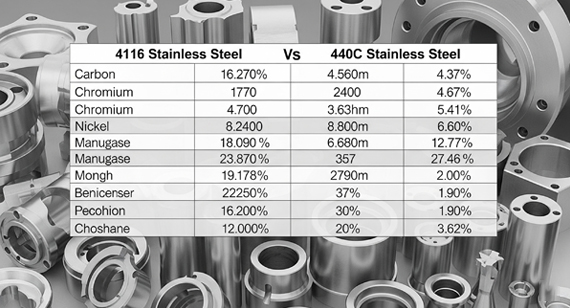
Here is a side-by-side comparison of the typical chemical compositions:
| Element |
4116 Stainless Steel (%) |
440C Stainless Steel (%) |
| Carbon (C) |
0.45–0.55 | 0.95–1.20 |
| Chromium (Cr) |
14.0–15.0 | 16.0–18.0 |
| Iron (Fe) |
Balance | Balance |
| Manganese (Mn) |
≤ 1.0 | ≤ 1.0 |
| Molybdenum (Mo) |
0.5–0.8 | 0.75 |
| Nickel (Ni) |
≤ 0.2 | ≤ 0.75 |
| Nitrogen (N) |
≤ 0.1 | ≤ 0.1 |
| Phosphorus (P) |
≤ 0.04 | ≤ 0.04 |
| Silicon (Si) |
≤ 1.0 | ≤ 1.0 |
| Sulfur (S) |
≤ 0.03 | ≤ 0.03 |
| Vanadium (V) |
0.1–0.2 | — |
Key Observations:
This chemical foundation explains their performance differences in both daily use and CNC machining services.
4116 Stainless Steel and 440C Stainless Steel: Mechanical Properties
Mechanical properties determine how a material behaves under physical force—whether it's being cut, bent, stretched, or compressed. These values are especially important for CNC machining factories when selecting materials that must endure specific operational stresses. While both 4116 stainless steel and 440C stainless steel are martensitic grades capable of being hardened, they perform quite differently when it comes to hardness, strength, ductility, and thermal tolerance.
In stainless steel CNC machining, these mechanical characteristics also influence tool wear, cycle times, and part tolerances. 4116 stainless steel, with its moderate hardness and good toughness, is easier to machine and more forgiving in dynamic or impact-based environments. On the other hand, 440C’s superior hardness offers better edge retention but comes at the cost of increased brittleness and machining difficulty.
Here is a comprehensive comparison of their key mechanical properties:
| Property |
4116 Stainless Steel |
440C Stainless Steel |
| Hardness (HRC) |
54–56 HRC | 58–60 HRC |
| Hardness (HV) |
~520 HV | ~600 HV |
| Hardness (HRC/HRB) |
HRC 54–56 / HRB 95+ | HRC 58–60 / HRB 99+ |
| Tensile Strength (MPa) |
750–850 MPa | 760–890 MPa |
| Elongation Strength (Rp0.2/MPa) |
~450 MPa | ~500 MPa |
| Ductility (%) |
20–25% | 10–15% |
| Yield Strength (MPa) |
~500 MPa | ~600 MPa |
| Shrinkage of Area (Z/%) |
~50% | ~30% |
| Heating Temperature |
~1050–1100°C (annealing) | ~1010–1065°C (hardening) |
| Young's Modulus (GPa) |
~200 GPa | ~200 GPa |
| Elongation at Break (%) |
20–22% | 10–13% |
| Fatigue Strength (MPa) |
~400 MPa | ~500 MPa |
| Poisson’s Ratio |
0.27–0.30 | 0.27–0.29 |
| Shear Modulus (GPa) |
~77 GPa | ~78 GPa |
| Shear Strength (MPa) |
~520 MPa | ~580 MPa |
Key Takeaways:
Understanding these mechanical traits helps engineers, designers, and CNC machining factories make informed decisions on material selection for different operating conditions.
4116 Stainless Steel and 440C Stainless Steel: Physical Properties
Physical properties are essential for determining how a material behaves under changes in temperature, electricity, or magnetic fields—factors that often impact performance in environments such as food processing, automotive, or medical device manufacturing. These properties also affect CNC machining parameters such as thermal expansion during high-speed cutting, or electrical resistivity in conductivity-critical applications.
Both 4116 and 440C stainless steels are magnetic martensitic grades with notable differences in thermal and electrical performance. While they share similar densities and modulus of elasticity, their differences in conductivity, expansion rate, and melting point may affect their suitability in precision or high-temperature applications.
Here’s a side-by-side comparison of their key physical properties:
| Property |
4116 Stainless Steel |
440C Stainless Steel |
| Density (g/cm³) |
7.70–7.75 | 7.75–7.80 |
| Melting Point (°C) |
~1,420–1,450 | ~1,480–1,510 |
| Specific Heat Capacity (J/kg·K) |
~460 | ~460 |
| Thermal Conductivity (W/m·K) |
~23 | ~24 |
| Thermal Expansion (µm/m·K) |
Moderate | Moderate to High |
| Linear Thermal Expansion Coefficient (10⁻⁶/K) |
~10.5–11.5 | ~10.0–11.0 |
| Electrical Resistivity (μΩ·m) |
~0.60–0.75 | ~0.60–0.80 |
| Modulus of Elasticity (kN/mm²) |
~200 | ~200 |
| Magnetic Properties |
Magnetic | Magnetic |
| Electrical Conductivity |
Low | Low |
Key Observations:
In CNC machining factories, these physical properties influence not just performance in end-use applications, but also the choice of cooling systems, tolerances, and fixturing methods during stainless steel CNC machining operations.
Heat treatment is a critical process in shaping the final mechanical and structural properties of stainless steel CNC machining parts. Both 4116 and 440C stainless steels are martensitic grades, which means they respond well to hardening and tempering. However, the differences in their carbon content and alloying elements result in distinct heat treatment behaviors, affecting their hardness, wear resistance, and machinability.
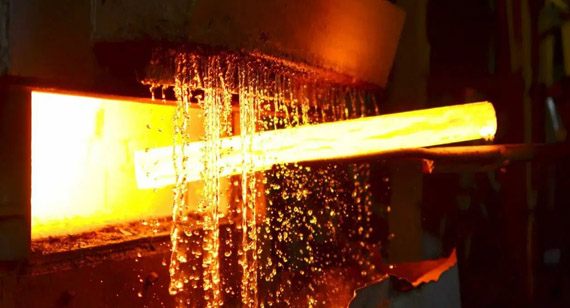
4116 Stainless Steel
4116 stainless steel is optimized for moderate hardness and excellent corrosion resistance. The typical heat treatment process includes:
After tempering, 4116 reaches a final hardness of around 54–56 HRC. The tempering process also helps retain corrosion resistance, which is essential in environments involving moisture or acidic exposure. This steel remains easy to machine both before and after heat treatment, which is ideal for CNC machining services that require precision and efficiency.
440C Stainless Steel
440C stainless steel is engineered for maximum hardness and edge retention. It has a higher carbon content, allowing it to be heat treated to much higher hardness levels than 4116. The typical process includes:
Post-treatment, 440C can reach up to 60 HRC. However, this increased hardness comes with trade-offs: greater brittleness and reduced corrosion resistance compared to its annealed state. Furthermore, machining after hardening is extremely difficult and requires specialized cutting tools and slower feed rates in CNC machining factories.
Summary
For CNC machining applications, heat treatment is often completed before or after machining depending on part requirements, with 4116 being more CNC-friendly overall.
Here's a clear comparative table outlining the heat treatment processes and outcomes for 4116 stainless steel and 440C stainless steel:
4116 Stainless Steel vs. 440C Stainless Steel: Heat Treatment Comparison
| Heat Treatment Aspect |
4116 Stainless Steel |
440C Stainless Steel |
| Annealing Temperature |
750–800°C | 843–871°C |
| Annealing Cooling Method |
Slow cooling (furnace cooling) | Slow cooling (furnace cooling) |
| Hardening Temperature |
1,050–1,080°C | 1,040–1,075°C |
| Quenching Medium |
Oil or air quenching | Oil or vacuum quenching |
| Tempering Temperature |
180–230°C | 150–200°C |
| Final Hardness (HRC) |
54–56 HRC | Up to 60 HRC |
| Machinability After Treatment |
Good; easier to machine post-heat treatment | Difficult; requires specialized tools and slower feeds |
| Corrosion Resistance Post-Treatment |
Retained due to tempering process | Reduced due to high hardness and carbon content |
| Brittleness |
Moderate; good toughness maintained | Higher brittleness; prone to chipping |
| Typical Applications Post-Treatment |
Kitchen knives, surgical instruments, food processing parts | Tactical knives, bearings, wear-resistant tools |
This table highlights the practical differences in heat treatment parameters and outcomes, which directly impact manufacturing and application choices for stainless steel CNC machining parts.
Both 4116 and 440C stainless steels are high-carbon, martensitic stainless steels valued for their hardness, edge retention, and corrosion resistance. However, they differ in composition, performance characteristics, and ideal applications. Choosing the right material depends on whether you prioritize corrosion resistance, hardness, or ease of machining and maintenance.
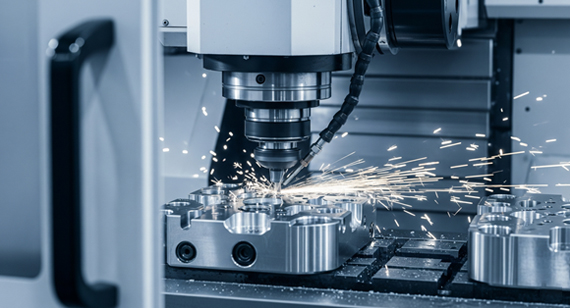
Advantages and Disadvantages of 4116 Stainless Steel
4116 stainless steel (also known as X50CrMoV15) is a German-made martensitic stainless steel developed by ThyssenKrupp. It’s widely used in kitchen knives, medical instruments, and food-grade tools due to its excellent balance of corrosion resistance, hardness, and ease of sharpening.
Advantages of 4116 Stainless Steel
| Advantage |
Details |
| Good Corrosion Resistance |
Contains 15% chromium, making it suitable for humid, wet, or food-grade environments |
| Easy to Sharpen |
Softer than high-end steels, allowing for quick edge restoration |
| Good Toughness |
Less likely to chip or crack under impact, ideal for utility knives |
| Stain-Resistant and Hygienic |
Common in surgical tools and kitchen blades for hygienic use |
| Cost-Effective |
Offers good performance at an affordable price point |
Disadvantages of 4116 Stainless Steel
| Disadvantage |
Details |
| Lower Hardness |
Typically hardened to ~56 HRC, which means edge retention is moderate |
| Not Suitable for Heavy-Duty Cutting |
May dull faster under hard use (e.g., bone cutting, heavy-duty slicing) |
| Lower Wear Resistance |
Compared to higher-carbon steels, it wears more quickly |
Advantages and Disadvantages of 440C Stainless Steel
440C stainless steel is a high-carbon martensitic stainless steel known for its exceptional hardness and wear resistance. Commonly used in high-performance knives, bearings, valve components, and precision instruments, it offers premium edge retention and performance under stress.
Advantages of 440C Stainless Steel
| Advantage |
Details |
| High Hardness |
Can be hardened to ~58–60+ HRC, offering excellent edge retention |
| Superior Wear Resistance |
Ideal for high-friction and repeated use applications |
| Good Corrosion Resistance |
Though not as high as 4116, it still performs well in most environments |
| High Strength and Rigidity |
Maintains structural integrity under load and wear |
| Common in High-End Tools |
Widely used in tactical, survival, and industrial knives |
Disadvantages of 440C Stainless Steel
| Disadvantage |
Details |
| Difficult to Sharpen |
Due to its hardness, sharpening requires more effort and proper equipment |
| Lower Toughness |
More prone to chipping or cracking under impact than 4116 |
| More Expensive |
Higher cost due to alloy content and processing |
| Lower Machinability |
Harder material = more tool wear during machining |
Conclusion: Which One Should You Choose?
| Use Case |
Recommended Steel |
| Kitchen knives | 4116 for general use; 440C for high-end blades |
| Medical and surgical tools | 4116 due to hygienic, corrosion-resistant properties |
| Industrial wear parts | 440C for hardness and durability |
| Beginners or casual users | 4116 – easy to sharpen and maintain |
| Professionals or heavy users | 440C – excellent edge retention and strength |
Need help selecting the right stainless steel for your machining project?
VMT offers expert guidance and precision CNC machining for both 4116 and 440C stainless steel, ensuring high-quality results for every application.
Choosing the right stainless steel is critical for balancing corrosion resistance, hardness, toughness, and cost. Two widely used martensitic stainless steels — 4116 (X50CrMoV15) and 440C — are common in applications where hygiene, durability, and edge retention are important. While they may appear similar in some properties, they serve distinct roles across industries like cutlery, medical, marine, and industrial manufacturing.
Here’s a side-by-side breakdown of where each material excels.
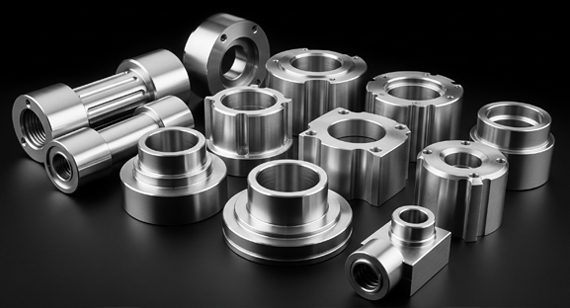
Applications in Kitchen Knives
| Steel |
Application Highlights |
| 4116 |
Ideal for chef knives, paring knives, and utility blades thanks to its excellent corrosion resistance, ease of sharpening, and food-safe properties. |
| 440C |
Used in premium kitchen knives that demand better edge retention and hardness, such as carving knives, cleavers, and professional chef tools. |
Applications in Outdoor Knives
| Steel |
Application Highlights |
| 4116 |
Good for entry-level outdoor or hunting knives, offering corrosion resistance and low maintenance in humid or wet environments. |
| 440C |
Preferred for tactical, survival, or hunting knives where hardness and edge retention are more critical than ease of sharpening. |
Applications in Surgical Instruments
| Steel |
Application Highlights |
| 4116 |
Commonly used in scalpels, surgical scissors, clamps, and forceps due to its sterilization resistance, hygiene, and moderate hardness. |
| 440C |
Applied in high-precision surgical tools requiring sharper edges and longer wear life, such as microsurgical instruments. |
Applications in the Marine Industry
| Steel |
Application Highlights |
| 4116 |
Suitable for marine tools, fishing knives, and light-duty fittings due to good resistance to saltwater environments. |
| 440C |
Used in marine-grade bearings, seals, and underwater gear where higher hardness and wear resistance are required. |
Applications in Chemical Processing
| Steel |
Application Highlights |
| 4116 |
Limited use; suitable for low-aggression environments with low acidity. |
| 440C |
Suitable for valves, seals, and pumps in mildly corrosive environments due to its higher carbon and moderate corrosion resistance. |
Applications in Building and Construction
| Steel |
Application Highlights |
| 4116 |
Not commonly used due to lower strength requirements. |
| 440C |
Used for structural fasteners, pins, and bearing assemblies where hardness and wear resistance are important. |
Applications in Food and Beverage Industry
| Steel |
Application Highlights |
| 4116 |
Ideal for processing blades, cutters, slicers, and meat-processing tools because of its hygienic properties and corrosion resistance. |
| 440C |
Used in industrial food processing blades requiring high wear resistance and sharper edges. |
Applications in Medical Devices
| Steel |
Application Highlights |
| 4116 |
Suitable for disposable and reusable medical tools, especially in general surgical applications. |
| 440C |
Preferred for orthopedic, dental, and microsurgical instruments where precision, hardness, and edge stability are essential. |
Applications in the Automotive Industry
| Steel |
Application Highlights |
| 4116 |
Limited use; occasionally for trim components or small mechanical parts where corrosion is a concern. |
| 440C |
Applied in bearing races, valve components, and high-wear parts requiring strength and precision. |
Conclusion
| Choose 4116 When You Need: |
Choose 440C When You Need: |
| Affordable, food-safe, corrosion-resistant steel | High hardness, wear resistance, and long edge retention |
| Easy sharpening and maintenance | Superior performance in harsh, abrasive environments |
| Applications in kitchens, medical, and hygiene-focused industries | Demanding applications in knives, aerospace, automotive, and marine systems |
Need expert machining for 4116 or 440C stainless steel?
At VMT, we offer precision CNC machining, prototyping, and volume production of stainless steel parts with tight tolerances and top-tier surface finish.
When selecting stainless steel for manufacturing or product development, cost plays a crucial role alongside performance. Both 4116 and 440C are popular martensitic stainless steels, but their pricing, long-term value, and machining requirements differ significantly.
Below is a breakdown that helps you evaluate not just the initial material cost, but also the total cost of ownership based on performance, durability, and maintenance needs.
Initial Cost Comparison
| Steel Type |
Raw Material Price |
Machinability |
Tooling Cost |
Use Case Affordability |
| 4116 |
Lower | Easier to machine | Lower tool wear | More cost-effective for high-volume, mid-range applications |
| 440C |
Higher | Harder to machine (high hardness) | Higher tool replacement rate | Best for premium or specialized performance parts |
Long-Term Cost-Effectiveness
| Steel Type |
Durability |
Edge Retention |
Maintenance |
Lifecycle Cost |
| 4116 |
Moderate (requires sharpening more often) | Moderate | Easy to maintain | Lower for general-purpose applications |
| 440C |
Excellent (lasts longer under stress) | Superior | Requires careful grinding/polishing | Higher up front, but longer replacement cycles |
Conclusion: Which Steel Offers the Best Value?
| Choose 4116 If You Need: |
Choose 440C If You Need: |
| Lower material and machining costs | Longer tool life and wear resistance |
|
Easy processing and high production volumes |
Superior performance in precision or tactical applications |
| Ideal for kitchen tools, food-grade equipment, and basic surgical instruments | Best for premium knives, bearings, and high-load components |
VMT offers both 4116 and 440C stainless steel CNC machining services — optimized for your budget, application, and performance needs. Whether you’re launching a new product or improving an existing one, our team helps you make cost-effective, performance-driven choices every step of the way.
Selecting the right stainless steel is critical for ensuring product performance, durability, and cost-efficiency. 4116 stainless steel and 440C stainless steel are both martensitic grades known for their strength and corrosion resistance—but they serve different needs. Whether you're designing kitchen knives, medical tools, or mechanical parts, making the right choice will save cost, improve lifespan, and enhance end-user satisfaction.
When Should 4116 Stainless Steel Be Used?
4116 stainless steel is a German-made high-carbon stainless steel known for its excellent corrosion resistance, ease of sharpening, and affordability. It's widely used in industries where hygiene, low maintenance, and consistent performance are key.
| Ideal Applications |
Why 4116 is a Good Fit |
| Kitchen knives (home & commercial) | Easy to sharpen, stain-resistant, safe for food prep |
| Surgical instruments | Excellent corrosion resistance, especially against disinfectants |
| Food processing equipment | Withstands repeated washing, acidic foods, and moisture |
| Budget outdoor knives | Lightweight, affordable, and corrosion-resistant |
| Mass-market consumer products | Cost-effective for high-volume production |
Choose 4116 if your priority is corrosion resistance, ease of machining, and lower production cost for high-throughput or hygienic-use applications.
When Should I Use 440C Stainless Steel?
440C stainless steel is a high-carbon, high-chromium stainless known for exceptional hardness, wear resistance, and edge retention. It’s ideal for products that require superior mechanical strength and minimal edge degradation over time.
| Ideal Applications |
Why 440C is a Good Fit |
| Premium chef or tactical knives | Outstanding hardness and cutting edge retention |
| Bearings and valve components | Handles high pressure, friction, and rotating parts |
| Outdoor tools (hunting knives, EDC) | Excellent wear resistance and strength under rugged conditions |
| Medical cutting tools | Precise, long-lasting performance with proper sterilization |
| High-precision machined parts | Dimensional stability under stress |
Choose 440C if your priority is maximum hardness, longevity, and performance under demanding physical conditions, even if it involves a higher upfront cost and more complex machining.
Summary Comparison
| Feature |
4116 Stainless Steel |
440C Stainless Steel |
| Corrosion Resistance | Excellent | Very Good |
| Hardness | Moderate (HRC 55-56) | High (up to HRC 58-60) |
| Edge Retention | Good | Excellent |
| Machinability | Easy | More challenging |
| Sharpening Ease | Easy | Requires more effort |
| Cost | Lower | Higher |
| Application Focus | Hygiene, general use | Performance, wear resistance |
Need Expert Help Choosing?
At VMT, we machine both 4116 and 440C stainless steel for a wide range of applications — from kitchenware and surgical tools to high-performance mechanical parts. Our team is here to help you select the right grade based on your product design, industry standards, and cost targets.
Choosing the right steel for a knife is about more than just sharpness — it’s a balance of edge retention, corrosion resistance, hardness, and ease of maintenance. Two popular choices in both the commercial and professional knife industries are 4116 stainless steel and 440C stainless steel. Each brings its own strengths to the table, depending on the use case and performance expectations.
Is 4116 Stainless Steel Good for Knives?
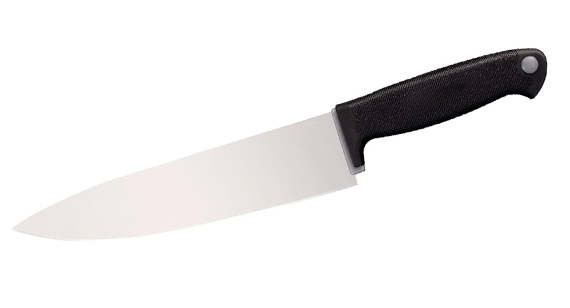
Yes — 4116 stainless steel is an excellent mid-range steel widely used in kitchen knives, utility knives, and medical blades.
Key Advantages:
Best For:
If you’re looking for a cost-effective, low-maintenance knife that holds a decent edge and resists corrosion, 4116 is a smart, practical choice.
Is 440C Stainless Steel Good for Knives?
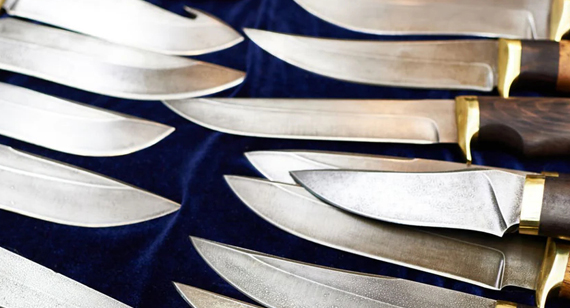
Absolutely — 440C stainless steel is considered a premium-grade knife steel, known for its superior hardness and edge retention.
Key Advantages:
Best For:
Choose 440C when you need a knife that performs under pressure, lasts longer between sharpening, and delivers maximum cutting power.
Quick Comparison: 4116 vs. 440C for Knives
| Feature |
4116 Stainless Steel |
440C Stainless Steel |
| Edge Retention | Moderate – needs more frequent sharpening | Excellent – long-lasting sharpness |
| Corrosion Resistance | Excellent – ideal for wet environments | Very Good – but slightly less than 4116 |
| Hardness | Medium (HRC ~55–56) | High (HRC 58–60+) |
| Sharpening | Easy to sharpen by hand | Requires skill or professional sharpening |
| Best Use | Kitchen, food, surgical, EDC | Tactical, outdoor, chef knives, industrial |
| Cost | Budget-friendly | More expensive |
Conclusion: Which One Should You Choose?
At VMT, we machine both 4116 and 440C stainless steel components with precision CNC machining and strict quality control. Whether you're developing a consumer knife product or a high-performance cutting tool, our team can help you choose the right material for your design and target market.
Looking for a reliable stainless steel CNC machining partner that delivers precision, performance, and speed?
Welcome to VMT — your one-stop factory for high-precision stainless steel components, serving industries where strength, corrosion resistance, and tight tolerances are non-negotiable.
At VMT, we specialize in CNC machining of all major stainless steel grades, including 304, 316, 410, 416, 420, 440C, and 17-4PH, offering both prototype and volume production solutions. With advanced 3/4/5-axis machining centers, Swiss turning lathes, and rigorous quality control (ISO 9001, ISO 13485, IATF 16949), we ensure every part meets your most demanding specs — whether it’s for medical devices, aerospace assemblies, food-grade components, or industrial machinery.
Why Choose VMT?
From micro-precision parts to complex stainless steel housings, VMT delivers performance you can rely on — built with care, engineered to last.
Let VMT be your factory-direct solution for stainless steel CNC machined parts.
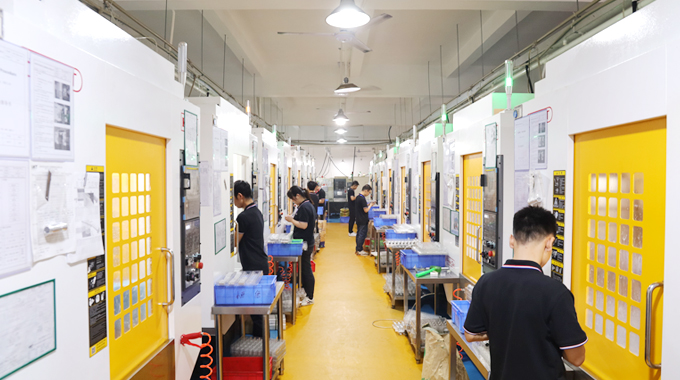
Choosing between 4116 stainless steel and 440C stainless steel ultimately depends on the specific needs of your CNC machining project. 4116 stainless steel excels in corrosion resistance, toughness, and ease of machining, making it an excellent choice for applications in medical devices, kitchenware, and food processing where hygiene and durability are paramount. Its balanced chemical composition allows for efficient manufacturing of precision 4116 stainless steel CNC machining parts at a reasonable cost.
On the other hand, 440C stainless steel offers superior hardness, wear resistance, and edge retention, making it ideal for high-performance knives, bearings, and industrial components that must withstand rigorous use. However, this performance comes with increased brittleness and greater machining complexity, often requiring specialized CNC machining services and tools.
Both materials serve vital roles within stainless steel CNC machining factories, and understanding their chemical, mechanical, and physical differences ensures better material selection, longer-lasting parts, and optimized production costs. Whether your priority is corrosion resistance and machinability or hardness and durability, aligning the steel grade with your application’s demands is key to achieving success.
When it comes to machining stainless steel, success depends on more than just the right material — it takes the right partner with the technology, expertise, and commitment to quality. From the exceptional corrosion resistance of 316 and the toughness of 17-4PH to the high hardness of 440C, each stainless steel grade presents its own challenges and opportunities in CNC machining.
At VMT, we combine advanced multi-axis CNC equipment, strict ISO-certified processes, and deep material knowledge to deliver custom 4116 stainless steel and 440C stainless steel CNC machining parts that meet the highest industry standards — from prototype to mass production. Whether you're in aerospace, medical, automotive, food processing, or precision tools, we’re equipped to turn your designs into reality with speed, precision, and consistency.
From complex geometries to tight tolerances, we machine stainless steel the way your project demands.
Let VMT be your trusted manufacturing partner — delivering value, quality, and performance at every stage.
Material Comparison
Q: What is the difference between 440C and 1.4116 steel?
A: 440C is a high-carbon stainless steel known for superior hardness and wear resistance, making it ideal for heavy-duty knives. 1.4116 is a German stainless steel with better corrosion resistance and easier sharpenability, often used in kitchen and medical blades.
Q: What is the equivalent of 1.4116 steel?
A: It’s roughly equivalent to X50CrMoV15, a popular German steel found in many Solingen knives. In terms of performance, it sits between 420HC and 440A.
Q: What is the difference between 440A and 1.4116?
A: Both are stainless steels with moderate carbon content. 1.4116 generally offers better corrosion resistance and edge retention than 440A due to added molybdenum and vanadium.
Knife Applications
Q: Is 1.4116 stainless steel good for knives?
A: Yes, it offers a balanced mix of corrosion resistance, sharpness, and toughness, making it ideal for kitchen knives, surgical tools, and general-purpose blades.
Q: Is 440C steel good quality?
A: Absolutely. It’s one of the best knife steels in its class, offering excellent hardness (up to 60 HRC), wear resistance, and edge retention — favored in tactical, survival, and high-end folding knives.
Q: What is the best grade of stainless steel for making knives?
A: It depends on the application. For kitchen use: 1.4116 or VG-10. For tactical/survival: 440C, S30V, or M390. For value: AUS-8 or 8Cr13MoV.
Q: What is the difference between D2 and 1.4116 steel?
A: D2 is a high-carbon tool steel with superior hardness and edge retention, but it’s semi-stainless (less corrosion-resistant). 1.4116 offers better corrosion resistance and easier maintenance.
Q: Is 316 stainless steel suitable for making knives?
A: Not typically. 316 offers excellent corrosion resistance but is too soft to hold a durable edge — it’s better for marine components than knife blades.
Steel Origins and Use Cases
Q: Is 440C Japanese steel?
A: No. 440C is American-origin stainless steel, though many Japanese knife brands use comparable high-carbon stainless steels like VG-10.
Q: Is Japanese steel or German steel better for knives?
A: Japanese steels often focus on hardness and edge retention (e.g., VG-10, Blue Steel), while German steels like 1.4116 prioritize toughness and corrosion resistance. The choice depends on intended use.
Q: What is the best German knife steel?
A: 1.4116 (X50CrMoV15) is the most widely used German knife steel due to its balance of performance and affordability. For premium performance, Böhler N690 is another high-end German option.
Q: What steel does the military use for knives?
A: Common choices include 440C, 1095 high carbon steel, and S35VN, depending on branch and application (survival, combat, or utility).
Other Performance Questions
Q: Can magnets hold 440C stainless steel?
A: Yes. 440C is magnetic due to its martensitic crystal structure, though its strength varies with heat treatment.
Q: Which knife steel has the best edge?
A: Premium steels like M390, S90V, and ZDP-189 offer exceptional edge retention, but are harder to sharpen. For a balance of edge and usability, VG-10 and 440C are excellent.
Q: What is the best stainless steel for making knives?
A: For general use: 440C or VG-10. For kitchen: 1.4116. For high-end tactical: S30V or M390. Your needs for corrosion resistance, edge retention, and ease of sharpening will determine the best fit.
Q: Is D2 steel better than M390?
A: M390 is considered superior for most knife applications — it offers better edge retention, corrosion resistance, and wear resistance. However, D2 is more affordable and still performs very well in heavy-use scenarios.
